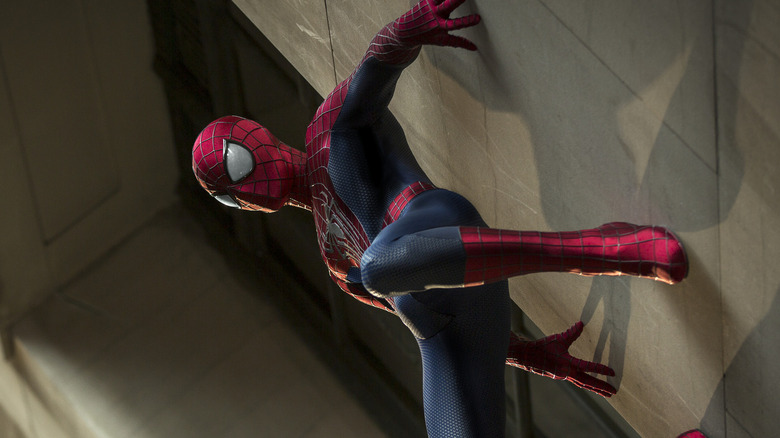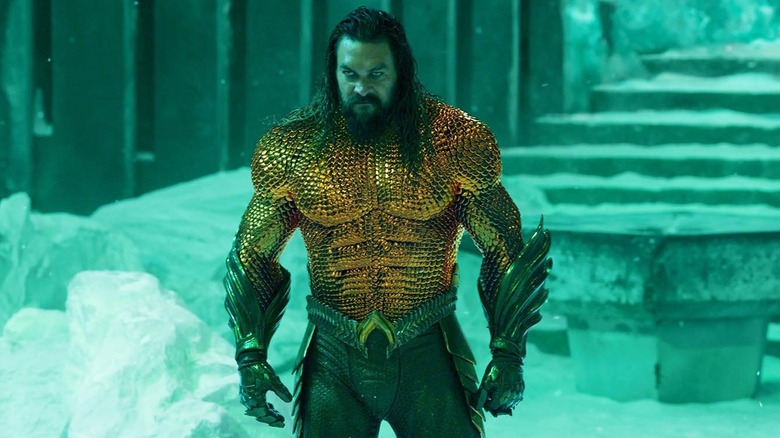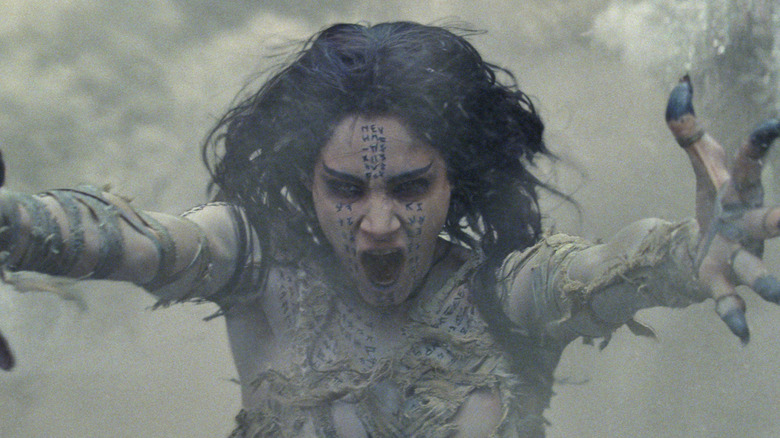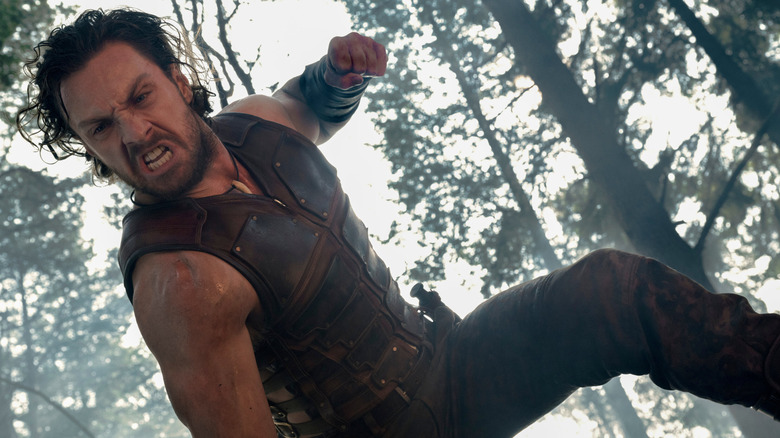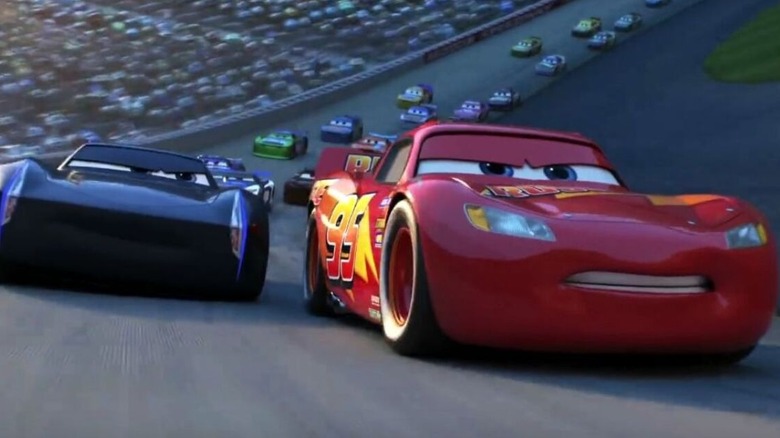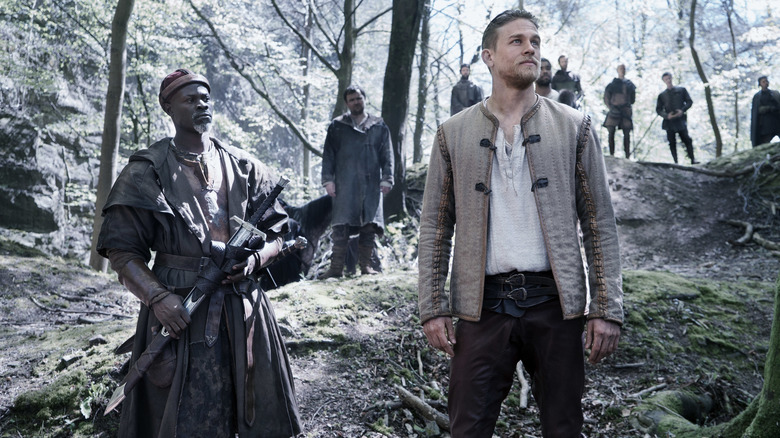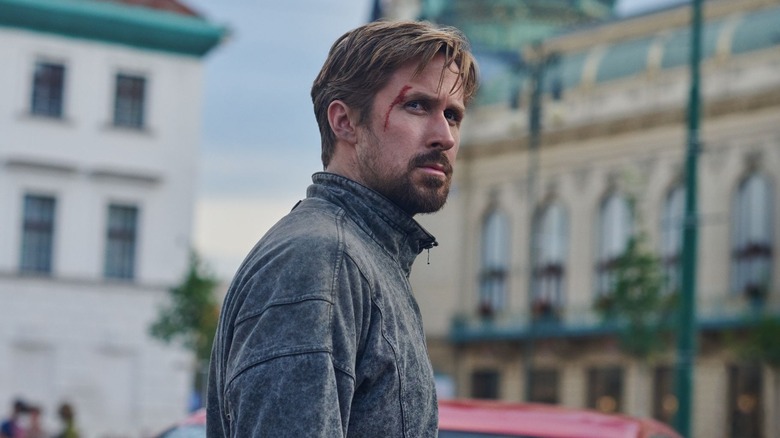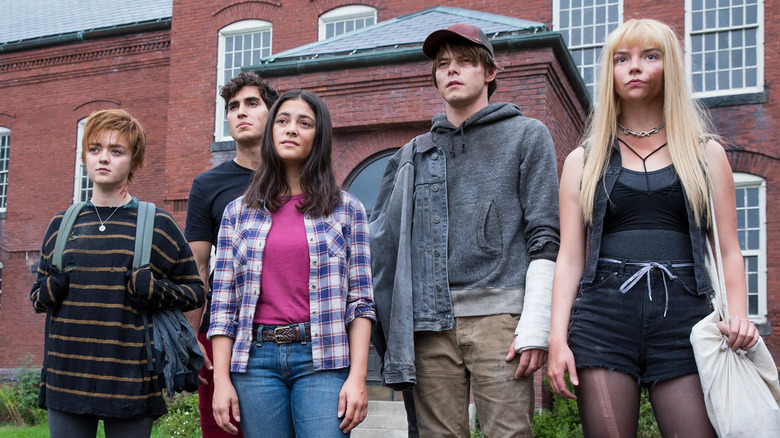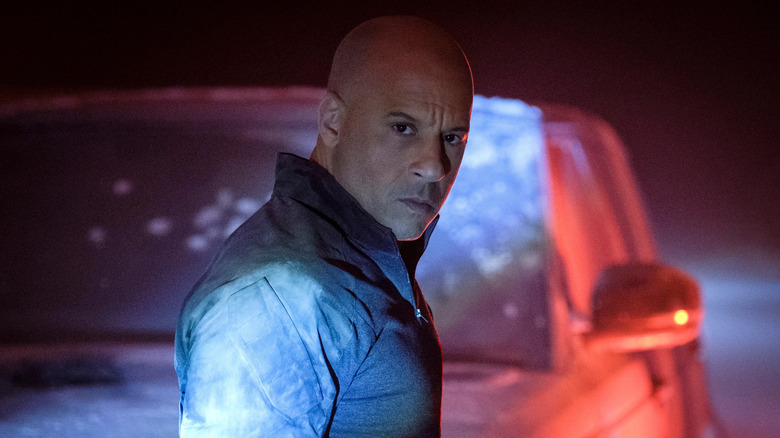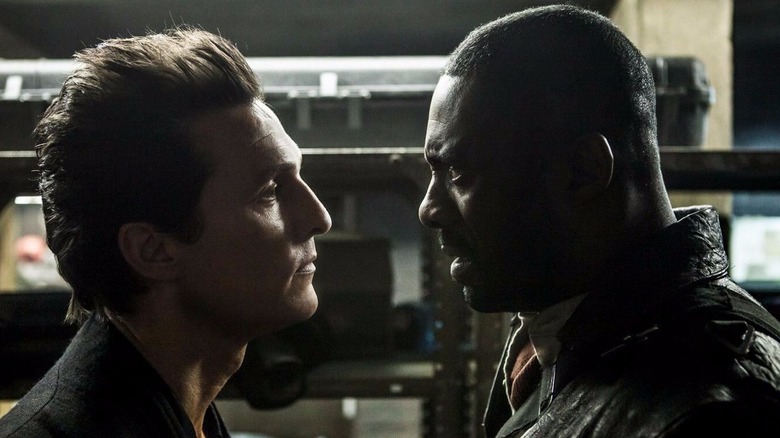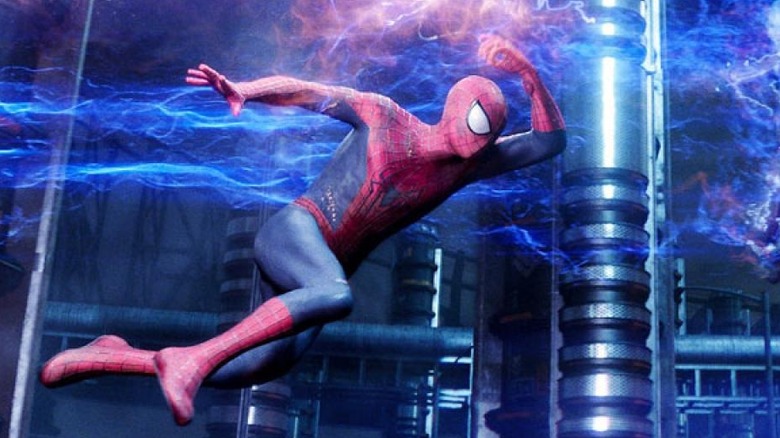In theory, cinematic universes are about longevity. Franchises like “Star Trek,” “Star Wars,” or the Marvel Cinematic Universe span countless mediums and projects of all shapes and sizes. They jostle between different time periods, explore radically unique characters in various genres, and always find time to redefine themselves for a new generation of audiences. But making that kind of potent, unending cinematic universe is not easy. Just look at the countless attempts by Hollywood to make such entities happen. Many would-be pretenders to the throne of “most lucrative cinematic universe” instead got stopped in their tracks by one exceedingly bad movie.
Just as a single “Iron Man” can launch an entire saga that spans decades of storytelling, so too can a massive franchise crumble with a solitary film. Heck, sometimes the inaugural entry in a cinematic universe kills the entire project before it gets started. Gazing back at the most vivid examples of bad movies that capsized entire franchises, it’s clear how precarious these costly sagas can be. Many different kinds of subpar cinema sank these universes, including projects hindered by corporate mergers, films that succumbed to the worst origin story impulses, and other outcomes.
Whatever led to these movies not working, the end result was underwhelming enough to halt all hopes for further spin-offs and sequels. Not everything can have the success of “Star Wars” or the MCU. These 12 movies that killed off their cinematic universes can certainly attest to that gruesome reality.
Aquaman and the Lost Kingdom
Ten years after “Man of Steel” kick-started the DC Extended Universe, it ground to a halt with “Aquaman and the Lost Kingdom.” This James Wan directorial effort was never conceived as the conclusion to this entire saga, especially when it was initially positioned for a December 2022 release. However, as its December 2023 launch date drew closer and closer, it became increasingly clear that new DC Studios head James Gunn and Peter Safran were about to overhaul what live-action DC movies looked like. A new continuity was emerging that wouldn’t have any space for the characters and storylines in DCEU features like “Lost Kingdom.”
This was far from a glorious way to close out the entire franchise, even just in terms of delivering a fun, standalone feature. “Aquaman and the Lost Kingdom” isn’t an atrocious film, thanks to Patrick Wilson’s committed performance and some zippy moments of Saturday morning cartoon fun. However, it’s largely a phoned-in exercise, lacking its predecessor’s willingness to constantly ramp up the silliness and chaos. Plus, much of the script calls for Jason Momoa’s Aquaman to engage in buddy cop banter with his estranged brother Orm (Wilson) — a decision that proves fatal, since Momoa is terrible at delivering that style of dialogue.
Throw in unengaging fight scenes and the baffling way in which returning villain Black Manta is handled, and it’s no wonder “Aquaman and the Lost Kingdom” was such a forgettable DCEU swan song.
The Mummy (2017)
The Dark Universe was an attempt to turn the classic Universal Monsters into an MCU-type saga that could spawn annual blockbusters at the box office. One of the most infamous photo shoots of all time was unveiled to the public in May 2017, with several major movie stars attached to 2017’s “The Mummy” and other proposed Dark Universe movies hastily Photoshopped into the same image. Tom Cruise, Javier Bardem, Johnny Depp, and others were all supposedly in the same room as a sign of how big this cinematic universe would become, and Universal Pictures was certainly hoping the box office receipts of this saga would match the photo’s star power.
The “Iron Man” equivalent to the endeavor was “The Mummy,” which saw Cruise’s Nick Morton tangling with Sofia Boutella’s title monster. It was a massive, globe-trotting action spectacle that also garnered laughable reviews from audiences and critics alike. Working neither as a horror film nor an adventure yarn, “The Mummy” appealed to nobody. It did okay in certain overseas markets, but given the lofty pre-release expectations for this project (not to mention its massive budget), director Alex Kurtzman’s film didn’t come anywhere close to being profitable, and the idea of it spawning a cinematic universe was laughable.
With that, subsequent Dark Universe movies like “The Bride of Frankenstein” were canned — but the original concept was truly scarier than any classic movie monster ever conceived.
Snake Eyes: G.I. Joe Origins
After an eight-year absence, the “G.I. Joe” movies finally returned to theaters in July 2021 with “Snake Eyes: G.I. Joe Origins.” This solo origin story for the no-longer-silent assassin Snake Eyes starred Henry Golding and was intended to launch a whole slew of follow-ups, including a direct sequel that was scripted over a year before “Snake Eyes” arrived in multiplexes. Teases in the story of the larger G.I. Joe organization (including supporting appearences from The Baroness and Scarlett) indicated that this project was also meant to springboard into a greater G.I. Joe cinematic universe that would include a bevy of other famous Hasbro toy company brands.
That never happened, of course. Upon its debut, “Snake Eyes” was dismissed by moviegoers around the globe. The film was a classic case of a modern would-be tentpole being all setup and not enough enjoyable standalone entertainment. The movie was obsessed with laying out every detail of how Snake Eyes and his rival Storm Shadow (Andrew Koji) got their names and personalities, yet didn’t give any thought to conjuring up immediate summer blockbuster fun. Snake Eyes didn’t even put his famous costume on until the film’s final scene.
With that, all dreams were dashed of “Snake Eyes” starting a saga encompassing further “G.I. Joe” movies and crossovers with other Hasbro intellectual properties like “Micronauts.” Knowing is half the battle, and alas, “Snake Eye” had no knowledge of how to properly launch a cinematic universe.
Kraven the Hunter
Sony’s Spider-Man Universe was doomed from the start. That cumbersome name alone made it something people didn’t want to talk about, and it was always unclear if this saga would ever expand beyond the undeniably lucrative “Venom” movies. April 2022’s “Morbius” bombed, while “Madame Web” became only notorious for spawning mocking internet memes. Closing out 2024 was “Kraven the Hunter,” an Aaron Taylor-Johnson movie that offered a feature-length origin story for its titular supervillain. Much like “Snake Eyes,” Kraven spends the entire runtime building up to putting on his classic outfit. That’s always a worrisome sign that your movie has just wasted everybody’s time.
Weeks before “Kraven the Hunter” hit theaters, Sony’s Spider-Man Universe was already basically dead in the water since the “Venom” trilogy had wrapped up and “Madame Web” flopped. The dismal audience reception for “Kraven the Hunter” didn’t suddenly give the SSU a new lease on life. The film garnered largely a shrug from all who watched it, the ultimate insult to this endlessly delayed and uber-costly venture. There just wasn’t much to get invested in when it came to a movie this visually drab and devoid of personality.
Amplifying all the apathy surrounding “Kraven the Hunter” was that, on its opening day, news broke that Sony’s Spider-Man Universe was officially defunct. With that, an utterly bizarre era in comic book movie history came to a whimpering close.
Cars 3
“Cars” didn’t receive the strongest reviews for a Pixar Animation Studios release, but it sold so much merchandise that a less-than-stellar critical reception was largely irrelevant. Disney had found a goldmine and was all too happy to exploit this universe for all it was worth. “Cars” became the first non-“Toy Story” feature in the Pixar canon to get a sequel in 2011’s “Cars 2,” while sister label DisneyToon Studios created spin-off features “Planes” and “Planes: Fire and Rescue.” This universe even stretched into a series of small-screen “Cars Toons” that chronicled tall tales about Mater’s past that somehow always involved Lightning McQueen.
In June 2017, “Cars 3” hit theaters and scored, at the time, the second-lowest domestic total in history for a Pixar feature. Overseas grosses weren’t great either, especially for a movie that cost $200 million to produce. No amount of hefty merchandise sales could spin this box office performance into a hit. While not despised by either critics or audiences, “Cars 3” didn’t get anywhere near a good enough reputation to justify returning to this universe after the creative nadir of “Cars 2.” Considering 2014’s “Planes: Fire and Rescue” had also come in under box office expectations, it was clear this world was running on empty financially.
Save for a Disney+ miniseries titled “Cars On the Road,” “Cars 3” marked the definitive end of this universe, which once seemed truly unstoppable in both its cultural omnipresence and money-printing abilities.
King Arthur: Legend of the Sword
Once “The Avengers” became a box office powerhouse, every American movie studio wanted its own cinematic universe that could spawn endless installments (and lots of cash). One such project that Warner Bros. brass greenlit was 2017’s “King Arthur: Legend of the Sword,” initially envisoned as the start of a six-film saga that would span all corners of Arthurian legend. Guy Ritchie, who previously breathed new life into Sherlock Holmes for the same studio, was hired to overhaul King Arthur for a modern generation. If all went according to plan, the “Legend of the Sword” ending tease of Arthur creating the “round table” would lead to a succession of sequels and spin-offs.
Unsurprisingly, “King Arthur: Legend of the Sword” was a critically reviled boondoggle that came nowhere close to accomplishing its ambitions. Audiences and critics alike were put off by the film’s excessive CGI and drab color scheme. Plus, restricting key pieces of Arthurian lore like Merlin to background appearances or sequel hints left “Legend of the Sword” devoid of any of the fun elements people would want out of a King Arthur movie. Oh, and Charlie Hunnam’s dreadful lead performance just hammered home how ill-conceived the whole enterprise was.
2017’s biggest box office bomb by a massive margin, “King Arthur: Legend of the Sword” never inspired further adventures in its mythology. It was a one-and-done misfire whose only legacy was as a cautionary tale.
The Gray Man
For some reason, writers-directors Anthony and Joe Russo have spent much of their post-“Avengers: Endgame” careers creating projects based around one idea: “what if spy movies/TV shows had none of their most famously fun elements?” Classic espionage thrillers and small-screen programs thrived on titillating sensuality, glorious imagery, and zippy aesthetics. Russo Brothers projects like “Citadel” or the Netflix movie “The Gray Man,” meanwhile, are sexless bores full of limp camerawork and drab atmosphere. No pretty ladies with lewd names or awe-inducing sets here. Maybe some of those classic crowdpleaser details could have helped “The Gray Man” not bungle its vision of starting a new shared universe for Netflix.
This Ryan Gosling/Chris Evans star vehicle wasn’t just supposed to spawn traditional sequels, but multiple spin-off films (including one potential entry focusing on a character played by Indian star Dhanush). In the years since its debut, none of those movies have emerged. Much of that came down to how “The Gray Man” failed to instill enthusiasm in anyone who watched it. This simulacrum of a glossy spy movie had no personality or inventive action chops to speak of that might make it resonate with viewers. Plus Gosling’s subsequent Ken-ergy in 2023’s “Barbie” far overshadowed this 2022 dud, where he just pouts and drops groan-worthy quips.
By late 2023, former Netflix film head Scott Stuber admitted that it was unclear if “The Gray Man 2” would ever happen. Years later, it’s apparent that the Russos’ bizarre vision of espionage entertainment remains in limbo.
The New Mutants
“The New Mutants” was greenlit with ambitions of ushering in a new era of “X-Men” features. As this franchise began expanding to include R-rated projects like “Logan” and “Deadpool,” it only made sense that these mutant-heavy movies would begin exploring territory like horror cinema or teen-oriented stories. Writer-director Josh Boone’s initial “New Mutants” vision was that it would span an entire trilogy, with each film exploring different horror aesthetics. If that plan came to pass, the exploits of “The New Mutants” would have upended audience expectations for what Fox-Marvel films could look like while providing a new moneymaker for the studio.
None of that ever happened, of course. Even before that fateful Disney-Fox merger, “The New Mutants” experienced numerous release date postponements, due to issues like plans for extensive reshoots (which didn’t take place) or COVID-19 closing movie theaters in March 2020. Meanwhile, Disney reclaiming the X-Men characters after it purchased 20th Century Fox suddenly meant that “The New Mutants” took on a different significance within its franchise. Rather than the start of a new chapter for these films, “Mutants” would now close out the Fox era of “X-Men” movies that began in July 2000.
The poor reception for “The New Mutants” upon its release in August 2020 ensured that nobody was weeping for this being the finale of the “X-Men” saga. It was, however, an ironic and tragic outcome for a film initially positioned as a new beginning rather than an awkward ending.
Bloodshot
Once Marvel and DC got their interconnected universes rolling in theaters, it was only a matter of time before other comic book companies got in on the action. Valiant Comics long harbored ambitions of breaking onto the big screen, and 2020’s “Bloodshot” was always conceived as a launchpad for a larger Valiant Comics cinematic universe. The film focused on Vin Diesel as a soldier who is resurrected as a superhero, using nano-technology to fight evil and uncover the truth about his past.
The box office prospects of “Bloodshot” were capsized by the COVID-19 pandemic, which shut down theaters just one week into its theatrical run. Even without that health crisis closing off its financial potential, though, it’s doubtful “Bloodshot” would have ever taken off culturally. Failing to gain momentum from either critics or viewers, the PG-13 actioner was a deeply generic affair devoid of the big creative swings marking beloved superhero movies like “The Dark Knight” or “Guardians of the Galaxy.”
“Bloodshot” flamed out as a failure on all fronts, and unsurprisingly, the Valiant Comics film franchise never came to pass. “Harbinger” and other adaptations of Valiant properties have languished in development and are unlikely to ever get made. Rather than being Valiant’s answer to “Iron Man,” “Bloodshot” was its equivalent to 2017’s “The Mummy,” killing a potential cinematic universe in one fell swoop.
The Dark Tower
Stephen King’s “Dark Tower” book series is an expansive saga spanning thousands of pages, multiple installments, and extensive lore that his die-hard fans gobble up like an especially scrumptious breakfast. While the popularity of the books has made them constantly ripe for adaptation in Hollywood, it’s always been tough distilling “The Dark Tower” into one feature film. Filmmaker Nikolaj Arcel, however, attempted to do just that in summer 2017 with “The Dark Tower,” which saw Idris Elba playing the gunslinger Roland Deschain and then-recent Oscar winner Matthew McConaughey taking the role of the nefarious Walter Padick.
Long trapped in development hell, the initial concept was for “The Dark Tower” to be spread out over several films and multiple seasons of a TV show. Those goals never wavered during the lengthy process of getting the film to the silver screen: Before this final version of “The Dark Tower” hit theaters, plans were announced for a TV series continuation of its world. But those ambitions quickly ground to a halt once people got a look at this movie. Everything that could go wrong with “The Dark Tower” did, and the film was bombarded with negative reviews skewering its cheap aesthetic, uninvolving narrative, and the bizarre decision to set so much of the story on boring old Earth instead of the fantastical Mid-World.
Between that and a middling box office run, all the urgency to blow up “The Dark Tower” into a cinematic universe vanished. These worlds would subsequently remain within the pages of King’s treasured novels.
The Amazing Spider-Man 2
After 2012’s “The Amazing Spider-Man” made $760 million at the worldwide box office, it was clear that Andrew Garfield’s Peter Parker/Spider-Man wasn’t going anywhere. Naturally, a sequel, “The Amazing Spider-Man 2,” was greenlit, along with sudden massive plans by Sony/Columbia Pictures to use this sequel as a springboard for a larger universe. Months before the debut of “The Amazing Spider-Man 2,” screenwriters were hired to conjure up “Sinister Six” and “Venom” spin-offs, while further plans included a movie focusing on Felicia Hardy/Black Cat (played briefly in “The Amazing Spider-Man 2” by Felicity Jones), and even a “Spider-Man 2099” project.
On the surface, the robust $717 million worldwide gross of “The Amazing Spider-Man 2” in 2014 should have been an automatic green light for any and all spin-offs and sequels. However, in North America, the follow-up barely cracked $200 million and was way more front-loaded than any other prior “Spider-Man” installment. There was also the major problem that “Amazing Spider-Man 2” was a terrible movie that utterly failed at juggling a slew of disparate subplots. This mopey, overstuffed vision of Spidey just wasn’t anywhere near good enough to resonate with audiences, let alone leave them hankering for more adventures in this universe.
Less than a year after “The Amazing Spider-Man 2” opened, Sony and Marvel Studios would enter into an agreement for a “Spider-Man” reboot. Save for Garfield’s appearance in 2021’s “Spider-Man: No Way Home,” this killed the “Amazing Spider-Man” cinematic universe dead in its tracks.

